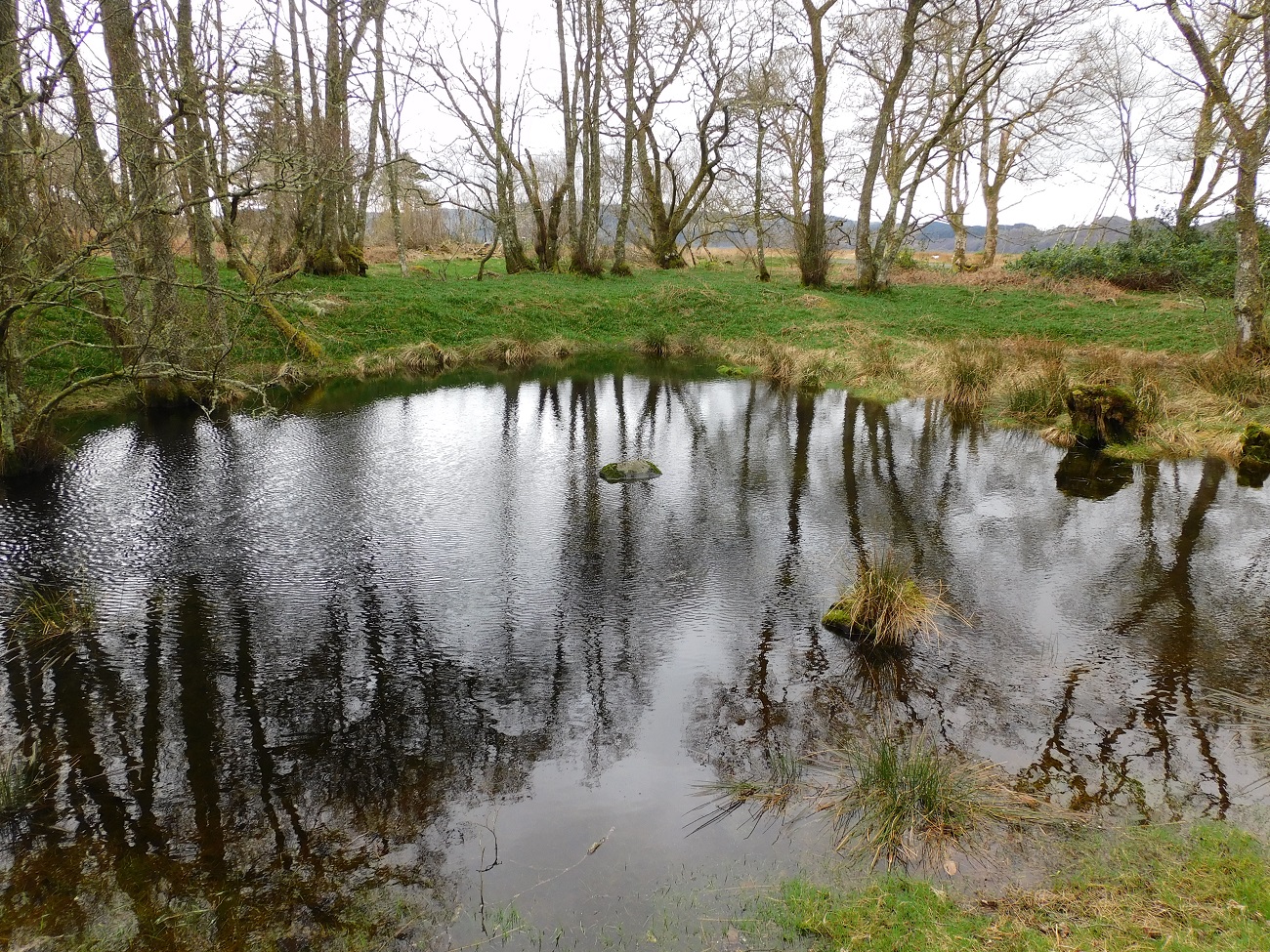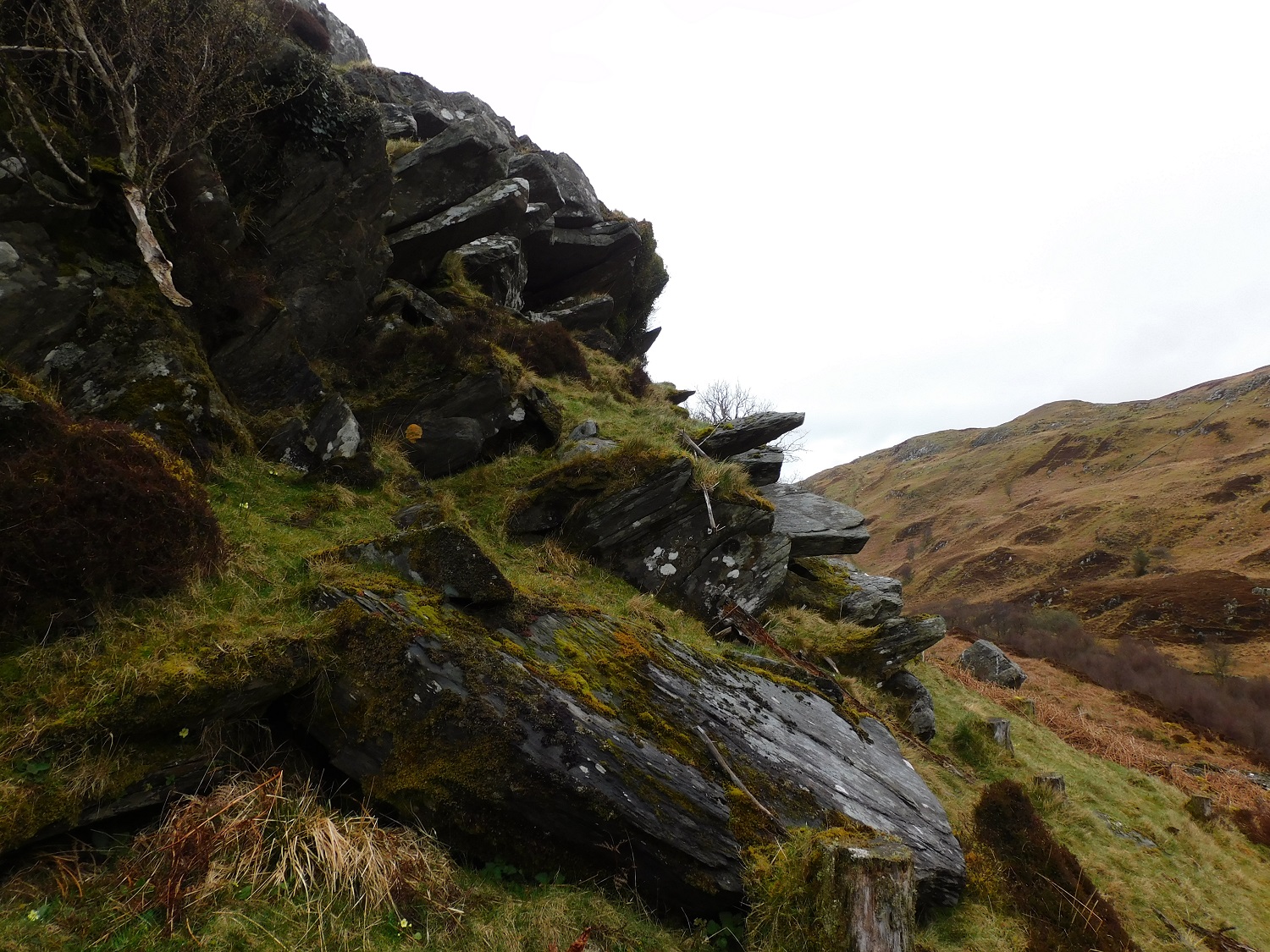



Looking east, if you where there you could just about see some of the slabs.

The wee loch emptied of water.

The stone in the middle is the top of a slab on the south side.

Looking past the castle, Kilmartin in the distance.

Part dun, and perhaps some additions. Next door the castle.






After Dun Fhuarlit I headed north east following a dry stane dyke until it met another similar dyke. Jump the dyke and remain on its south side.
There are several very large kerbstones still earthfast. Sadly, it is easy to work out where much of stones for all of the nearby dykes were found. The centre of the site is almost flat except for near the kerbs, some cairn material remains surviving at 0.3m to 0.6m in height. These dykes also cut into the site, trenching has also removed a few kerbs – it still sits at over 19m in width.
With the same views as its near neighbour Dun Fhuarlit, it’s part 2 of a nice walk around the Kilmory Chapel. Part 3 being the nearby dun to south of the religious site.
Visited 08/04/2024.
From Kilmory Chapel look west, a modern marker cairn sits on top of the ancient monument. The only obstacle is the Kilmory Burn which is a relatively easy jump. Surprisingly the ground was dry despite the recent storms, the Atlantic wind drying the grass, which in turn is kept reasonably short by the local sheep.
Kerbs remain in place around the southern side of the much exploited cairn. A lot of stones have been removed, leaving a site that is 19m wide and, in parts, almost 1m high.
Stunning views up and down various sea lochs, further west the Paps Of Jura dominate the skyline.
Visited 08/04/2024.

Carn Baan in the distance, near the right stone.




Its lashing down in Kilmartin, but it came nowhere near me.





North side of he monument, the footprint is at least 2 meters wider than the stones.










West part of the north looking east, low cloud approaching.

A narrow ledge beneath the north section of wall.


The north east wall looking east over to Kintyre.

To the east is Loch Caolisport, beyond is West Loch Tarbert and Kintyre.









From well above Loch Sween, approach from the west, enter the dun from the east.
